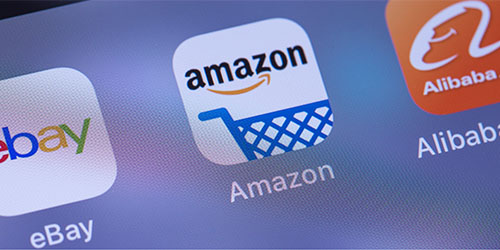
![]() Insights
Insights
Industry News
We’ve said it before, and we’ll say it again. Digital marketing is a fast-paced industry and the gold standard today is not the same as it was ten, five, and even one year ago. The technology and practices used are constantly evolving and the search landscape today is completely unrecognisable from what it was in 2010.
As technology continues to develop, marketers are able to push the boundaries of what we can do – and how we market in 2021 is unlikely to be the same as how it is now. While it’s impossible to predict the exact nature of these changes, our experts have weighed in on the trends we can expect to see arise this year.
If you prefer to listen than read, our Head of SEO, Rob Marsden, and Head of Paid Media, Pete Whitmarsh, discuss four of the key trends in Search Laboratory’s first-ever podcast.
2019 saw us reach the point of no return for ML-powered campaigns. We will continue to see the role of machine learning develop and grow throughout the decade, eventually becoming an instrumental element of digital marketing. – Pete Whitmarsh, Head of Paid Media
As machine learning becomes more embedded in digital marketing, marketers will have less control, rather than more, and everything from ad campaign settings, targeting and creative will be largely controlled by platforms. Despite how it sounds, this is actually a good thing; with ML looking after the day to day tasks, the advertiser’s role will be more about setting goals, parameters and strategy. – James Kenny, Head of Programmatic
With consumers beginning their customer journey on online marketplaces, these platforms will become an integral aspect of digital marketing; in particular, we will see Amazon Advertising usage scale over the next few years. While the platform itself is basic right now, especially when compared to Google Ads, there is clear investment by Amazon in improving the features and we can expect to see more in the way of bid automation, bid adjustments, audiences etc. – Pete Whitmarsh, Head of Paid Media

2020 will see a greater focus on creative at the starting point of campaigns, with businesses combining their resources so that design feeds into all channels from the get-go. We will see businesses begin to combine their resources so that content, brand and advertising all work together – or at least try to. – James Kenny, Head of Programmatic
We will continue to see Google experiment with and improve creative ad formats like Gallery Ads and Discovery Ads. Video will become more important, and we’ll see a lot more resource spent on video advertising through the year. – Pete Whitmarsh, Head of Paid Media; James Kenny, Head of Programmatic
Advertising platforms will improve and develop their features to increase the value of all their advertising formats. By making things like lifetime value (LTV) more of a priority, improving attribution and continuing to make cross-device and online-to-offline tracking more accessible, ad platforms can help advertisers uncover more value from their campaigns, which of course encourages a higher investment.
In addition to improving features, Google will continue to simplify the platform by introducing smart campaigns and automated feeds. This lowers the barrier to entry, so smaller brands are able to make better use of Google Ads.
Google is also working hard to ensure its non-search channels succeed. YouTube has been a major push for Google, and they will continue to work hard so the platform performs not only from a brand awareness point of view, but a direct response point of view. – Pete Whitmarsh, Head of Paid Media
Google’s new property type, App + Web, will gain more traction in 2020 and companies will begin to migrate from Google Analytics and Firebase over the next few years.
App + Web gives companies without Analytics 360 accessibility to greater website hit data, and we expect the property roll out to be followed by SMEs showing innovative use of combining this data with other business data sources to make their marketing more effective. For example, estimating LTV or automating the product of audiences using machine learning. – Paul Shearing, Head of Analytics and Data Science
Once data is in the cloud; insights, analysis, integration and automatic activation (in the marketing tech) becomes easier. While it’s unlikely to happen in 2020 in complete, this year we will start to see a movement towards cloud for marketing, with many larger enterprises laying the foundations by building an infrastructure that supports it. – Jimmy McCann, Head of Digital Strategy

Social media platforms will expand their current offering to consumers and businesses alike. In app payment options will be implemented and improved, leading to a rise in social commerce and a change in the customer journey as we know it.
Conversational features will also continue to grow and evolve, most notably with the potential merger of Facebook Messenger, Instagram and WhatsApp into one stream. Messaging bots will become more commonplace over the next decade as the AI used in this technology improves. Niki Lancaster, Head of Social Media
With the rollout of BERT, voice search results should be more accurate and as people realise how reliable the technology is becoming, they will start to use it more, although it will continue to be used mainly for informational and local intent queries. We’re still a long way off voice search for purchases. – Rob Marsden, Head of SEO
While organic voice searches will increase, but only for users at the start of their sales journey looking for information, rather than those ready to buy a product. Until voice searches begin to happen at the last stage of the customer journey, there will be limited impact on paid advertising. – Pete Whitmarsh, Head of Paid Media
Two big challenges facing SEOs right now is long development queues meaning slow technical SEO fix implementation, and a world where ‘SEO best practise’ is no longer good enough to get consistent results. Using service workers on the edge can help to tackle both of these issues by allowing technical fixes to be implemented much more quickly, and by opening up the door to SEO A/B testing. This practise will become more commonplace through the 2020s, with A/B testing in particular set to become the norm. Rob Marsden, Head of SEO

Localising content to ensure it is culturally and linguistically compliant has always been important, but it is even more crucial that brands get this right since the rollout of BERT. The algorithm means Google understands the intent behind search queries better than ever. From a translation perspective, businesses will need to have their content translated in the most idiomatic, natural way, not by a machine translation tool, if it is to rank. Katie Selby, Translation Project Manager
While the future is never guaranteed, it is clear that we have entered a decade of innovation and change. With more businesses and consumers online now than ever, standing out and making an impact requires the clever use of creative, technology and data. While platforms will evolve to deliver these technologies, it is the role of the marketer to figure our smart solutions to make the most of their data and deliver a first-class customer experience.
Stay on top of industry insightsSubscribe to our newsletter

![]() Insights
Insights

![]() Insights
Insights

![]() Insights
Insights